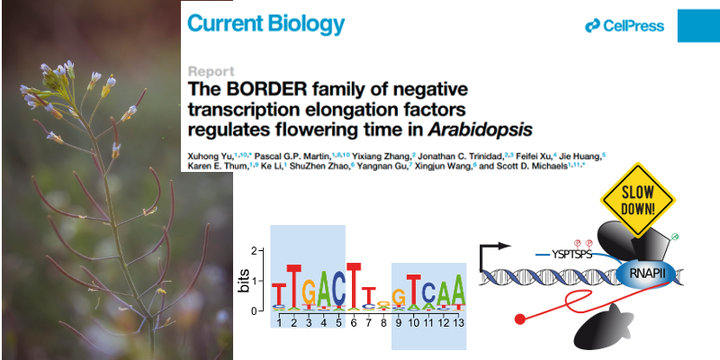The BORDER family of negative transcription elongation factors regulates flowering time in Arabidopsis
 34666004
34666004
Abstract
Transcription initiation has long been considered a primary regulatory step in gene expression. Recent work, however, shows that downstream events, such as transcription elongation, can also play important roles. A well-characterized example from animals is promoter-proximal pausing, where transcriptionally engaged Pol II accumulates 30-50 bp downstream of the transcription start site (TSS) and is thought to enable rapid gene activation. Plants do not make widespread use of promoter-proximal pausing; however, in a phenomenon known as 3' pausing, a significant increase in Pol II is observed near the transcript end site (TES) of many genes. Previous work has shown that 3' pausing is promoted by the BORDER (BDR) family of negative transcription elongation factors. Here we show that BDR proteins play key roles in gene repression. Consistent with BDR proteins acting to slow or pause elongating Pol II, BDR-repressed genes are characterized by high levels of Pol II occupancy, yet low levels of mRNA. The BDR proteins physically interact with FPA, one of approximately two dozen genes collectively referred to as the autonomous floral-promotion pathway, which are necessary for the repression of the flowering time gene FLOWERING LOCUS C (FLC). In early-flowering strains, FLC expression is repressed by repressive histone modifications, such as histone H3 lysine 27 trimethylation (H3K27me3), thereby allowing the plants to flower early. These results suggest that the repression of transcription elongation by BDR proteins may allow for the temporary pausing of transcription or facilitate the long-term repression of genes by repressive histone modifications.